Have Mercy Upon Us
Yasser Ballemans, Elena Beelaerts, Amitai Ben David, Martha Colburn, Maartje Folkeringa, Gijs Frieling, Guido Geelen, Sachi Miyachi, Linda Nieuwstad, Hieke Pars, Mischa van Teeffelen, Mathilde de VrieseA parade of artists through the centre of Amsterdam
On the 1st of November artists celebrate being an artist with an unique walking exhibition from the neighbourhood of the Rijksmuseum to the exhibition space W139 in the Red Light District. A procession of art, music and literature during the Museum Night which will take 3 hours and visit the Spui, the Rokin, the Beursplein and the Oude Kerk.
Performances by rapper Typhoon - drummer Kim Weemhoff – singer Kees Taal – writer Tommy Wieringa – De Amsterdamse Cantorij – clarinetist Michael Moore – flamencosinger Ezequiel Benitez.
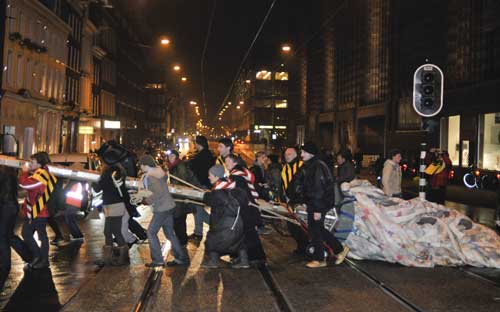

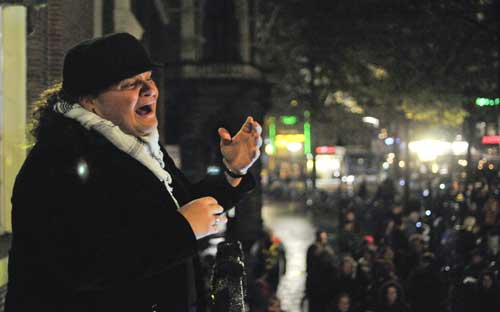

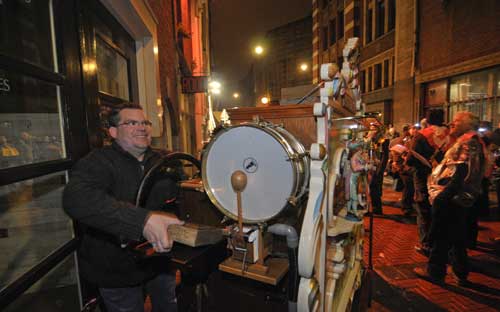

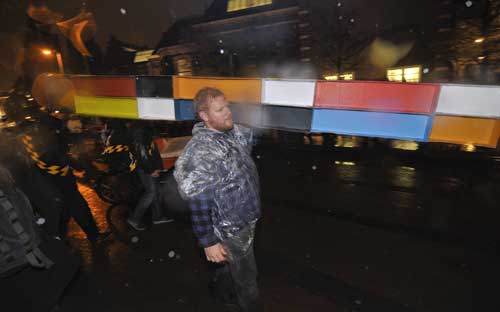
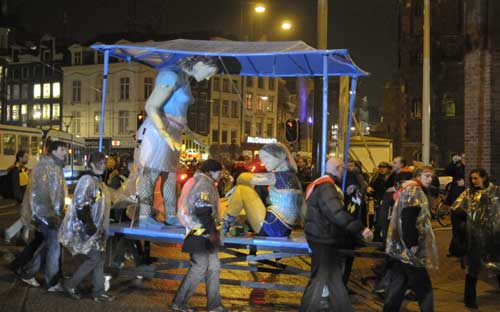
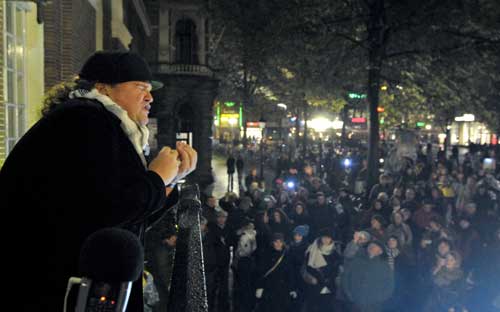

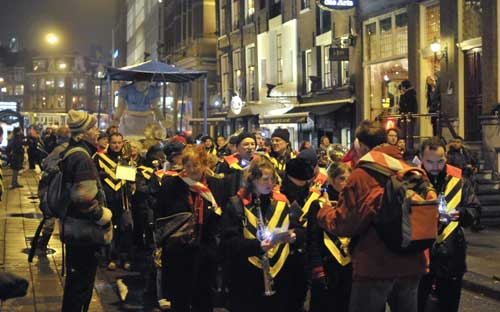
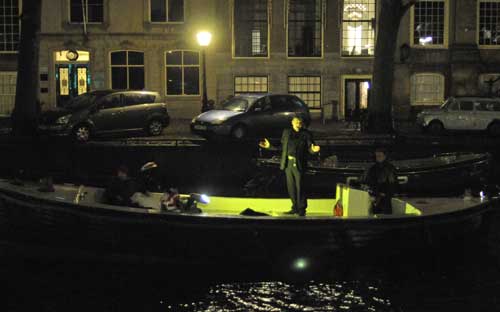
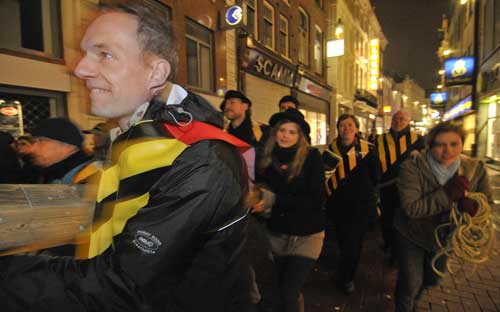
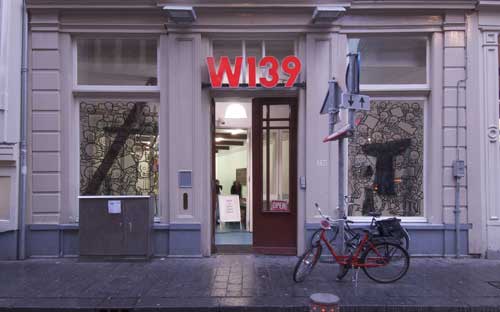
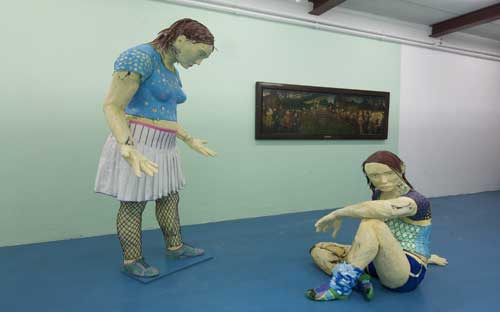
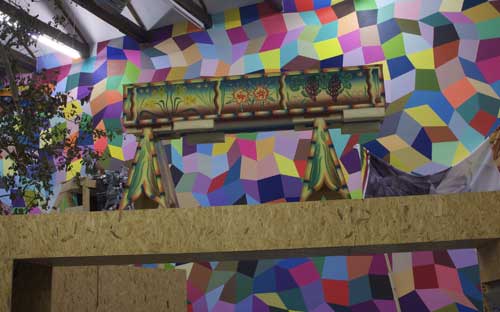
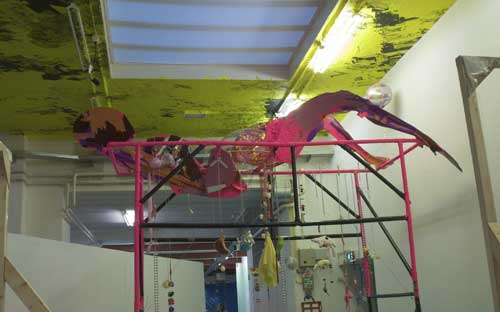
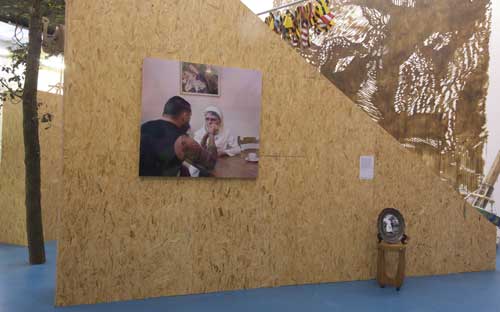
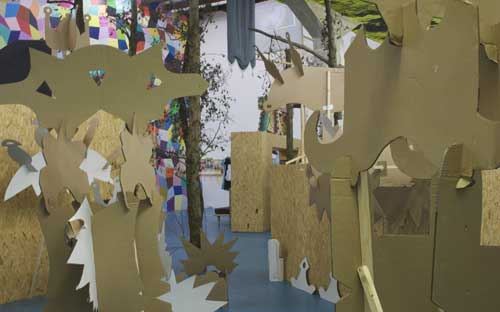
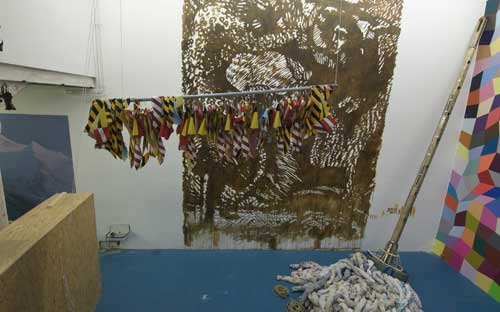

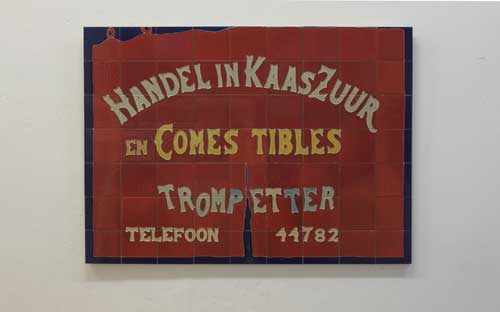
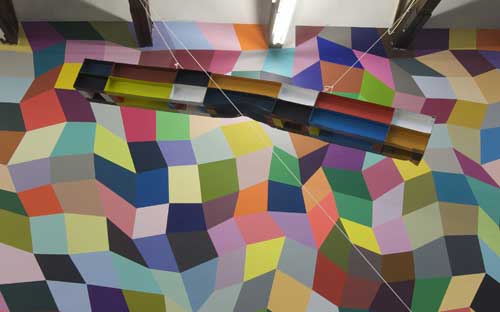


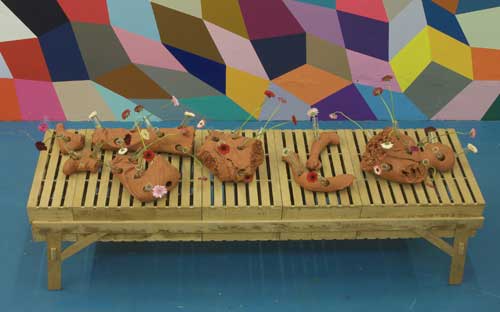
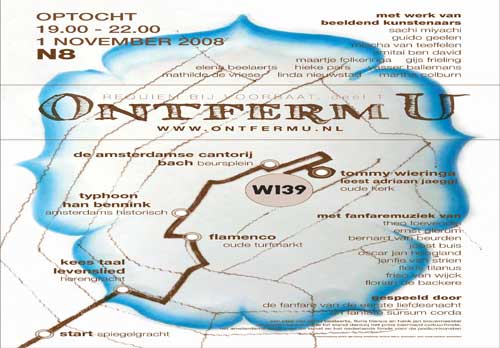
The Museum Night of 2008 opens with a private viewing of Damien Hirsts diamond-encrusted skull. It is an occult work with magical effect: the triumph of death proposed as an ideal. The prosperous man – which identifies itself with its body without reservation – finds, in seeing this sculpture, his leading vision.
After this séance a walking exhibition with portable art and music leaves from the Spiegelgracht for the Warmoesstraat 139.
Sachi Miyachi will prepare the route at the start of the procession with salt and pepper; at the end, she will wash the street clean with an 10-metre-long mop that is rinsed out in the canal. Yasser Ballemans recreates 3-D versions of doodles of American presidents. Doodles of McCain and Obama will be on display during Museumn8. Elena Beelaerts made a canopy of fruits carried by a group of majorettes; a small incendiary device is set so that, half way, the image catches fire. Gijs Frieling has made a cardboard replica of a Donald Judd sculpture and a banner with embroidered Mondriaans. Maartje Folkeringa created a standing and sitting figure from polystyrene which will travel with the procession under a portable awning. Guido Geelen’s sculpture of a body from which flowers grow, will also be part of the procession. The carrying caskets were made by Piet Hein Eek.
Art is a public secret. There’s something to see and something to see in it. Some artists say that only the visible is relevant: that nothing exists outside of the material, form and colour. Others claim that it’s about ideas and the formal language, the visible material part, isn’t relevant. But, in the end, there’s always something to see and something you can’t quite see in it. Or, more precisely, something seen by some and not by others. This is why the art world is sometimes – justifiably – seen as a conspiracy, a secret society that holds the key to mysteries. Various people (including Rudi Fuchs and Gerhard Richter) have demonstrated that Art has come to take the place of Religion; for Art is dualistic in nature: revealing and concealing at the same time.
A procession is a ritual pageant in which the participants carry symbolic objects. The symbolic objects are normally at home in a temple, church and in prayer and rituals. During a procession, the objects temporarily leave these ‘homes’. Artist Elena Beelaerts: “the parade is a ritualised transition from the studio to the exhibition, and making in this way visible the sculptures. We ask the public to have mercy upon this artists initiative, which exists from the authentic desire of artists. To bring their work and profession under the attention of a bigger audience. But most of all to soften through art, the hardening and legislation of the public space felt especially by artists.
During the process, Fanfare van de Eerste Liefdesnacht and Fanfare Sursum Corda will play music by Bernard van Beurden, Janfie van Strien, Theo Loevendie, Friso van Wijck, Joost Buis, Oscar Jan Hoogland, Florian de Backere and Ernst Glerum.
For more information and pictures: http://www.ontfermu.nl
With special thanks to Elena Beelaerts, Floris Tilanus and Henk Jan Bouwmeester